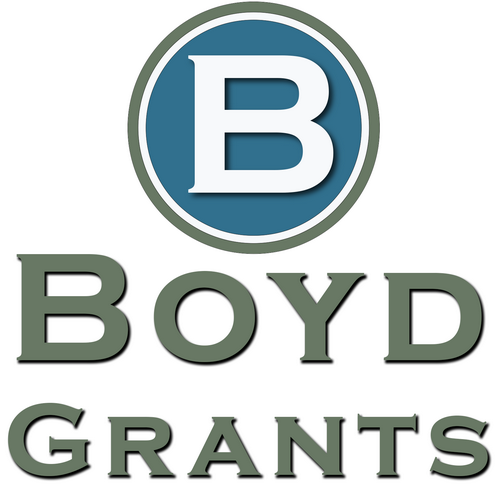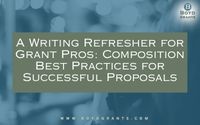Strong writing is essential to competitive grant proposals. Still, project design, outcomes, and budgets can rush the writing process, leaving even the strongest grant writers with a narrative with unintentional errors. Writing mistakes can lead to lower scores and unfunded proposals in an increasingly competitive grant environment, making compelling writing and well-edited proposals more critical than ever.
Kimberly Hayes de Muga says, “Even though I have long maintained that grant writing is 20% actual writing and 80% hunting and gathering data and supporting documents, well-chosen words remain essential to crafting winning grants.”[1]
Here are some common writing best practices for successful proposals.
- Clear and Consistent Copy is Best
Word count and character limits are becoming the norm as more grant applications shift to online submissions and forms. This makes clear and concise language necessary to get to the “submit” button.
One tried and true way to tighten up your writing is to put the subject and verb together in each sentence. You also want to ensure you rely on simple sentences as your starting point but vary your sentence length to avoid choppiness. You can check your clarity and concision by reading your proposal aloud. It is too long if you cannot finish a sentence in one breath.
- Choose Active Voice
Active voice is a “grammatical structure in which the sentence’s subject performs the action of the verb.” Active voice is the best practice in most writing, including grants. You can achieve consistent active voice by choosing engaging verbs in your writing. Words like achieve, mobilize, prioritize, undertake, and implement are active verbs that the subject of your sentence can perform.
- First versus Third Person
There is a debate in the grants field about whether first or third person is the industry standard. One of the best ways to make this choice is to follow the funder’s lead. How formal is the funder on their website? What type of grant submission are they requesting? The first person is great for storytelling and creates a feeling that the reader is on the inside with the author. The third person observes from the outside. Both have their place in grant proposals.
Government grants and those that are research-heavy lend themselves to the third person, whereas first person is an excellent tool in a letter-only request.
- Use formal tone
Tone is the attitude your words convey. The overall tone of a grant proposal should be collaborative, confident, and authoritative. The best grant requests inspire confidence that the grantmaker’s investment will result in community change.
You can convey this confidence by mirroring the funder’s language. Generally, government agencies tend to expect more formal language, while foundations are more receptive to less formal language. It’s best to avoid negativity, informality, and jargon in proposals, regardless of the funder.
- Cite Sources Consistently
Lastly, citing sources is crucial to build credibility. Make sure to use one citation style consistently. If the funder has a preferred style, always prioritize that, but if a style is not specified, choose either in-text citation or footnotes, not both.
Even if you have avoided these common mistakes in your proposal, copyediting should always be a step in the grant preparation process. Writing errors make it more difficult for funders to understand the proposed project, resulting in lower scores and unfunded proposals. Having a colleague or supervisor read your proposal will help to make your writing stronger. If you do not have a second reader available, try reading the proposal aloud and use AI editing tools to ensure your writing is clean, easily readable, and thorough.
[1] Win More Grants by Writing Real Page Turners. Fundraising HayDay. https://www.dhleonardconsulting.com/win-more-grants-by-writing-real-page-turners/Joshilyn Jackson


Recent Comments